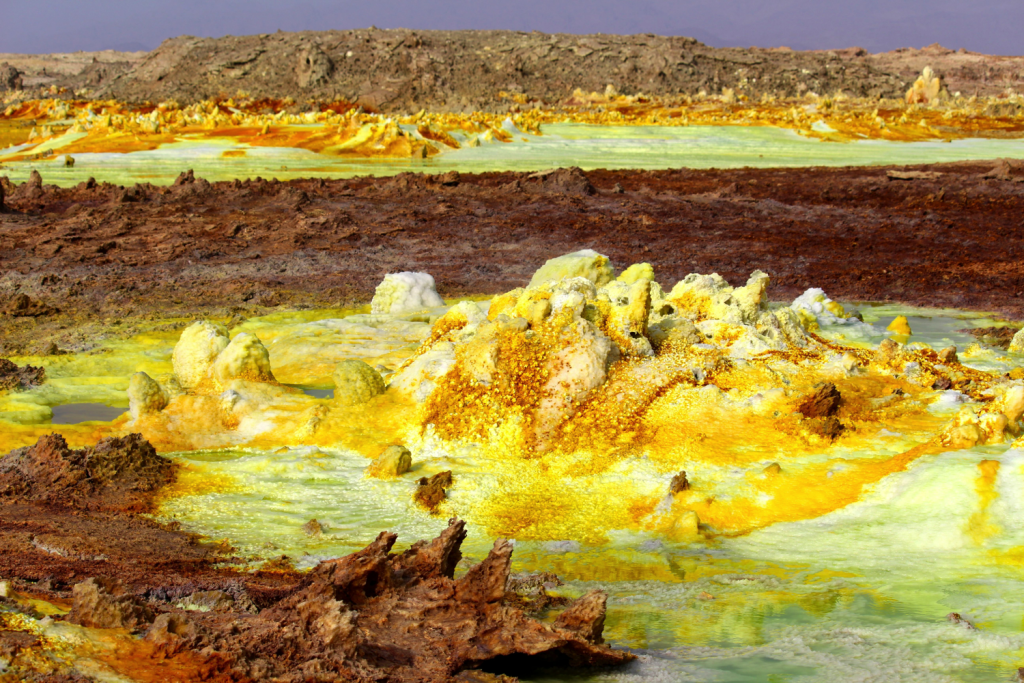
Scientists have found bacteria thriving in an extreme environment on Earth which has similar conditions to the planet Mars earlier in its history.
According to the authors, the findings—described in the journal Scientific Reports—could have significant implications in the search for signs of past life on the Red Planet.
An international team of researchers led by Felipe Gómez from the Astrobiology Center in Spain identified a strain of bacteria from the order Nanohaloarchaeles in samples collected from the otherworldly Dallol hot springs in northern Ethiopia during an expedition in January 2017.
The samples were taken from a salt structure created by water supersaturated with various salts—including silver chloride, zinc iron sulfide, manganese dioxide and rock salt—at temperatures of 89 degrees Celsius (192 degrees Fahrenheit) and an extremely acidic pH of 0.25.
"This is an exotic, multi-extreme environment, with organisms that need to love high temperature, high salt content and very low pH in order to survive," Gómez said in a statement.
Once collected, the team took the samples to a state-of-the-art facility in Spain where they analyzed them using a range of techniques, including electron microscopy, chemical analysis and DNA sequencing,
The team identified tiny, spherical structures in the salt samples which contained high quantities of carbon, indicating that they were biological in origin. Closer inspection revealed microorganisms measuring 50-500 nanometers in diameter—up to 20 times smaller than the average bacteria.
The Dallol volcano and geothermal area—in which the hot springs are located—are particularly interesting to astrobiologists because the unusual chemistry bears a close resemblance to hydrothermal environments which have been found on Mars, such as the Gusey Crater.
"Deep investigation of the characteristics of this amazing site will improve our understanding of the limits of life on Earth and inform our search for life on Mars and elsewhere in the universe," Barbara Cavalazzi, lead author of the study from the University of Bologna, said in a statement.
The Dallol geothermal area is one the hottest places on the planet with average annual temperatures hovering around 100 degrees Fahrenheit. It is rich in volcanic activity as it is located near the junction of three tectonic plates. A magma reservoir beneath the volcano superheats underground water and enriches the liquid with gases. Over time, the water makes its way to the surface, depositing minerals and creating the unique technicolor environment that can be seen today.
Uncommon Knowledge
Newsweek is committed to challenging conventional wisdom and finding connections in the search for common ground.
Newsweek is committed to challenging conventional wisdom and finding connections in the search for common ground.
About the writer
Aristos is a Newsweek science reporter with the London, U.K., bureau. He reports on science and health topics, including; animal, ... Read more





